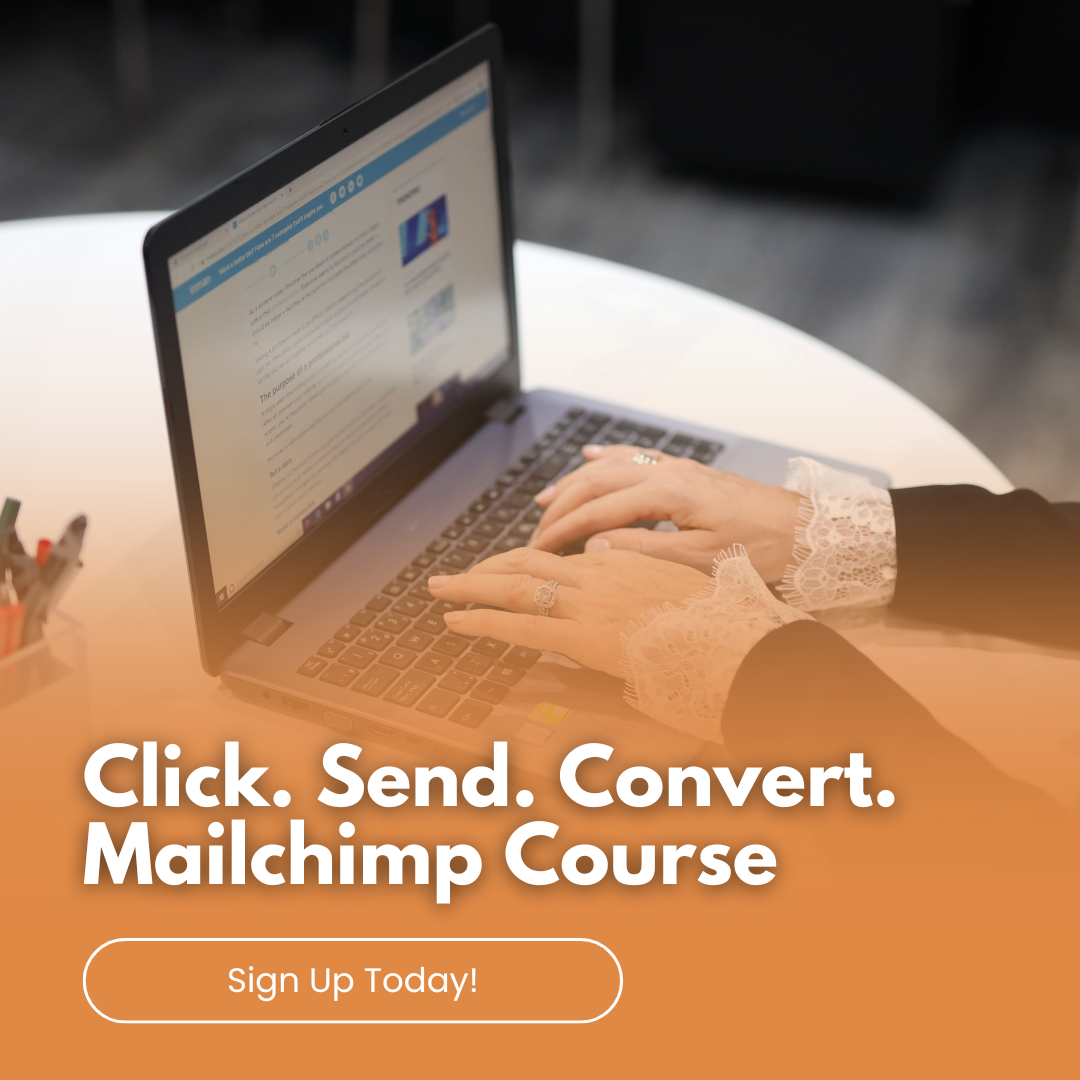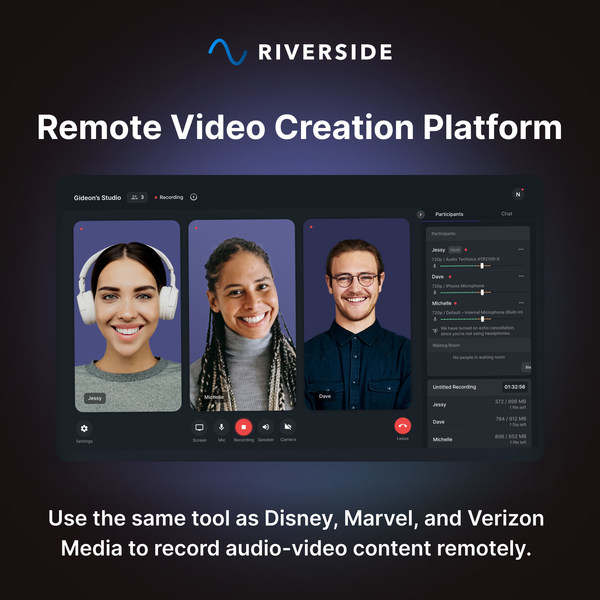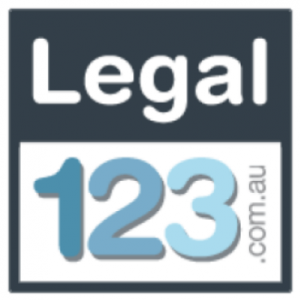
by Anne Clark | Nov 22, 2024 | Business, Online Business Manager
An online business manager serves what purpose?
Many business owners find themselves juggling strategy, operations, marketing, and team management. Although business owners are quite good at what they do, the daily running of their company can sometimes become taxing. Here an online business manager (OBM) comes in handy.
An online business manager is a professional with an eye towards the operational management of an online company. Their main responsibility is to supervise the behind-the-scenes operations, keeping a company operational, freeing business owners to concentrate on expansion and their areas of competence.
Important Roles of an Online Business Manager
Project Control
OBMs guarantee timely and within budget delivery of projects. To keep everything on schedule, they draft thorough project plans, assign work to the staff, and track development. Launching a new product, organising a webinar, or running a marketing campaign—OBMs are the glue keeping the project together.
Teamwork Management
Running a remote team can be difficult. Hiring, integrating, and supervising virtual team members falls to OBMs. They guarantee that everyone understands their roles, deadlines, and expectations, so promoting a harmonic and effective workplace.
Development and Optimisation of Systems
An OBM’s job depends critically on system setup and streamlining. From streamlining processes to combining tools, including email marketing systems, CRM systems, and project management tools, OBMs help companies become more effective.
Oversight of Operations
Daily operations of the company are supervised by OBMs, who make sure everything runs like a well-maintaining machine. This covers process management, operational bottleneck clearing, and best practice applications to raise general output.
Figures and Documentation
Making decisions in a company requires a knowledge of its numbers. Key performance indicators (KPIs) are tracked by OBMs against corporate goals, who also offer actionable insights to enable owners to make wise decisions.
Strategic Back-Up
Acting as a second-in-command, OBMs assist companies in developing and reaching strategic objectives. They enable long-term planning, task prioritising, and matching team efforts with the corporate vision.
Why would one want an online business manager?
Freedom of Time
Business owners can reclaim their time to concentrate on big-picture goals, creativity, and personal development by assigning operational duties to an OBM.
Knowledge
OBMs offer a lot of knowledge in running online companies. Their degree of knowledge improves efficiency and development since they grasp digital tools, team dynamics, and strategies to simplify processes.
Scalabilities
An OBM can enable proper scale if your company is expanding. From handling more responsibility to creating the required infrastructure, they make sure that expansion doesn’t compromise quality or customer satisfaction.
Lowered Burnout
The continual pressures of their job sometimes overwhelm business owners. By assuming responsibility for daily operations, OBMs help entrepreneurs to work smarter rather than harder and reduce their stress.
Who Needs a Manager of Online Business?
An OBM is perfect for
- People running several revenue sources in business.
- Entrepreneurs ready for expansion but lacking the operational support.
- Leaders running projects and teams needing a reliable right-hand person.
- Visionaries and creatives who flourish when free to concentrate on their zone of genius.
In essence,
Helping companies run effectively and develop sustainably depends mostly on an online business manager. They are the operational backbone, enabling company owners to confidently and clearly enter their leadership role. Hiring an OBM could be the secret to releasing the next level of your success if the demands of your online business are stranding you.

by Anne Clark | Nov 4, 2024 | Business
This season of The Block 2024 has served up plenty of drama along with its usual construction challenges. While the show often highlights teamwork and resilience, it has also underscored some behaviours that business owners should avoid. The season has featured moments like Kylie’s aggressive comments, Mimi’s reluctance to take responsibility, and Maddy and Charlotte’s impressive kindness in the face of unkindness—each offering a valuable lesson in professionalism, accountability, and resilience.
Here’s what business owners can take away from these dynamics on The Block this season.
1. The Importance of Professionalism
Kylie’s frequent, aggressive comments throughout the season have added unnecessary tension to an already high-pressure environment. Her behaviour is a reminder of how essential professionalism is, especially when stakes are high. In business, maintaining a respectful, constructive tone even when frustrated fosters a positive work environment. Confrontational behaviour not only damages individual reputations but can also erode team trust and morale.
Staying professional, even under stress, helps set the tone for a respectful and productive workplace, creating an example that reflects positively on the entire team.
2. Accountability Isn’t Optional
Mimi’s comment, “I don’t want to talk about it. What I do when I’m drunk is none of my business,” was a revealing moment that highlighted a lack of accountability. In business, avoiding responsibility or blaming external factors doesn’t just harm reputations—it also disrupts trust and collaboration. Accountability means owning actions and recognising the impact they have on others. It’s especially important in challenging moments, as it builds a foundation of trust and respect.
Reliable leaders and teams own their mistakes and demonstrate a willingness to learn from them. Accountability is essential for a culture of growth and improvement.
3. The Strength of Kindness and Resilience
Despite Kylie’s harsh comments, Maddy and Charlotte continued to treat her with kindness and respect. Their resilience and grace in the face of difficult behaviour set a powerful example. In any business, showing kindness—even to challenging people—is an asset. This approach can help de-escalate tension, create a more supportive work environment, and demonstrate an unwavering commitment to integrity.
Kindness isn’t about accepting poor behaviour but about choosing to respond with compassion and respect. This approach builds resilience and fosters healthier working relationships, even in the face of adversity.
4. Effective Communication is Critical
The season’s conflicts have underscored the importance of clear, respectful communication. Kylie’s harsh comments and Mimi’s reluctance to engage in accountability have shown how poor communication can lead to misunderstandings and escalate issues. In business, clear and transparent communication is key to avoiding unnecessary drama and ensuring everyone is aligned on goals.
Good communication practices, like avoiding unnecessary comments and staying solution-focused, keep projects on track and foster a positive team atmosphere.
5. Reputation Over Short-Term Wins
Aggressive and defensive attitudes might create a memorable moment on TV, but they rarely lead to long-term success. In business, reputation is everything. Short-term gains achieved through confrontation or blame-shifting may win attention, but they also risk undermining trust. A tarnished reputation can have lasting repercussions, affecting client relationships and team morale.
Prioritising integrity and relationship-building over the “win at all costs” mentality creates a positive, sustainable impact, strengthening connections with clients, customers, and partners.
6. Resilience is Key to Overcoming Conflict
Maddy and Charlotte’s resilience in the face of unkind behaviour demonstrated how important it is to stay focused and unflustered by criticism or negativity. In business, feedback and even criticism are a constant part of the process. Handling it with grace and resilience not only showcases maturity but helps maintain a constructive focus on goals.
Resilience allows leaders and teams to move forward without getting bogged down by negativity or challenges. It’s a skill that helps businesses stay on course, no matter the obstacles.
Wrapping Up
The Block 2024 has been a season full of teachable moments, reminding business owners of the power of professionalism, accountability, and kindness. While aggressive or dismissive attitudes might add to the drama, they ultimately serve as reminders of what to avoid. Focusing on respect, effective communication, and integrity helps build a business that thrives on positive relationships and long-term success.
In the end, a successful business is about fostering trust, building a positive reputation, and leading by example. Learning from The Block’s ups and downs, business owners can create a legacy that lasts by prioritising professionalism, collaboration, and resilience. These qualities not only create a strong foundation but also ensure a reputation that stands the test of time.

by Anne Clark | Oct 30, 2024 | Business
The Importance of Working with Aligned Clients and Customers
It’s easy to feel like every client is a good client. However, true growth and fulfillment come when you work with clients and customers who genuinely align with your values, vision, and way of working. Knowing your ideal client and staying committed to attracting those aligned with you brings profound benefits and minimises the stress and challenges that arise from misalignment. Here’s why it’s essential to know your ideal client, the benefits of working with aligned customers, and what can go wrong when you don’t.
Why Identifying Your Ideal Client is Crucial
Your ideal client is more than just someone who pays for your services; they are the people who resonate with your mission, appreciate your approach, and align with the core values of your business. They are a joy to work with, bringing energy and collaboration to the table. By identifying and attracting your ideal clients, you’re not only building a business but also creating a supportive community around you.
Benefits of Working with Aligned Clients
Working with clients who share your values and beliefs offers numerous advantages that go beyond just business success. Here are some key benefits:
- Enhanced Working Relationships and Mutual Respect Aligned clients understand your process and respect your expertise. They trust your judgement, making collaboration easier and more enjoyable. This mutual respect fosters a positive working relationship, reduces conflicts, and enhances communication.
- Improved Job Satisfaction and Motivation When you work with clients who align with your values and purpose, your work feels more rewarding. You’re no longer simply delivering a service but contributing to a vision you believe in, which boosts your motivation and job satisfaction.
- Increased Efficiency and Productivity With aligned clients, you can focus more on delivering value and less on managing misunderstandings or bridging misaligned expectations. This clear alignment streamlines workflows, allowing you to work more efficiently and effectively.
- Greater Retention and Long-Term RelationshipsAligned clients are more likely to become loyal customers and refer you to others who share similar values. This long-term relationship reduces the need for constant client acquisition, providing stability and allowing you to focus on deepening these connections. In my experience, working with aligned clients has led to incredible partnerships that span over 5 to 10 years – and we’re still going strong! These enduring relationships build a solid foundation for my business, allowing me to continually evolve alongside clients who genuinely value and trust the work we do together.
- Business Growth Through Word of Mouth When clients feel connected to you and the work you do, they naturally spread the word within their networks. This type of organic growth is powerful, as it brings in referrals who are also likely to be aligned with your values, perpetuating a cycle of positive client relationships. In fact, a vast majority of my business is referral-based, which fills me with pride and reflects the value I place on customer service and working with the right people. This steady stream of referrals is a testament to the trust and connection built with clients, showcasing the profound impact of alignment in long-term business success.
- Authentic and Empowering Work Environment Working with aligned clients creates a work environment where you can show up as your authentic self. This authenticity brings out your best work and attracts even more clients who appreciate you for who you are, making your business feel energising rather than exhausting.
What Can Go Wrong When You Don’t Work with Aligned Clients
The consequences of working with misaligned clients can be draining, stressful, and detrimental to your business. Here’s what can go wrong:
- Constant Miscommunication and Misunderstandings Clients who don’t share your values or vision often have different expectations and priorities. This misalignment leads to frequent miscommunications, frustration, and the need to constantly clarify or re-explain your process. Over time, these misunderstandings erode trust and create tension.
- Increased Stress and Emotional Burnout Working with clients who don’t resonate with your approach can be draining. You might find yourself compromising on your values or bending over backward to meet their expectations. Over time, this strain can lead to burnout, reducing your overall passion and motivation for your work.
- Reduced Quality of Work When you’re constantly adapting to a client’s demands that don’t align with your approach, it can become challenging to deliver your best work. Misaligned clients might push you to take shortcuts, adjust your style, or work in ways that feel uncomfortable, ultimately impacting the quality of your output.
- Lowered Confidence and Trust in Your Own Process Working with clients who question your process or disregard your expertise can chip away at your confidence. You may start second-guessing yourself or feel unsure about your own approach, which can hinder your professional growth and effectiveness. I’ve experienced this firsthand; when clients constantly undermine my decisions, it erodes my confidence and, in turn, compromises the integrity of my work. In contrast, when trust and confidence are present, the magic flows naturally. With aligned clients who value my expertise, I can bring my best to the table, creating a collaborative and empowering environment where we both thrive.
- Decreased Retention and High Client Turnover Misaligned clients are less likely to stick around for long. They might express dissatisfaction, leave negative feedback, or choose not to renew your services. This high turnover can create instability in your business, as you’ll constantly be seeking new clients to replace those who don’t stay.
- Disruption of Team Morale Misaligned clients don’t only impact you—they also affect your team. If you work with others, they may also feel the strain of trying to meet conflicting demands or navigating challenging communications. This misalignment can disrupt team morale, affecting everyone’s productivity and satisfaction.
How to Identify Your Ideal Client
To ensure you work with aligned clients, it’s essential to know who they are and what they value. Here are steps to help you identify your ideal client:
- Clarify Your Mission and Core Values Start by defining your mission and values. Understanding what drives you and what’s important to you in your business will help you attract clients who share similar beliefs and visions.
- Outline Key Characteristics Consider the qualities you’d like in a client—are they collaborative, open-minded, and respectful of your expertise? Do they share a passion for the same causes or value the same principles? Create a profile that captures these attributes.
- Define Your Boundaries Knowing what you will and won’t tolerate in a client relationship is crucial. Set clear boundaries and communicate them upfront, so clients know what to expect when working with you.
- Create a Clear, Aligned Message Your website, social media presence, and marketing materials should reflect your mission and values. By sharing your story and approach authentically, you attract clients who resonate with your message and deter those who don’t align.
- Ask Qualifying Questions in Initial Consultations During consultations, ask questions that reveal whether the client’s values and goals align with yours. Listen carefully to their answers to determine if they’re a good fit for your business.
Working with aligned clients and customers isn’t just a preference – it’s a powerful strategy for building a sustainable, fulfilling business. When you surround yourself with clients who share your values, your work becomes more rewarding, your relationships are stronger, and your business can thrive. By understanding your ideal client, staying true to your values, and setting clear boundaries, you create a harmonious and prosperous business environment that uplifts both you and those you serve. In the end, alignment isn’t just about business success; it’s about creating a fulfilling path that reflects who you truly are and the impact you’re here to make.

by Anne Clark | Oct 29, 2024 | Business, Kajabi
One amazing approach to generate regular income, build a devoted community, and give your readers special value is a membership site. Should you be thinking about starting one, Kajabi is the ideal platform for realising your idea. Its all-in-one capability and easy tools help to simplify the construction and administration of a membership site than ever. Let’s explore this beginner’s guide on how to set up your membership site with Kajabi – and how I can help you to have a flawless experience.
Clearly state your membership offering.
Clearly defining what you will offer your members comes first. Exclusively video tutorials, live Q&A sessions, downloadable materials, or access to a private community? Your membership materials should fit your niche and handle the particular needs of your target market.
Configure your Kajabi account.
Should you not already have a Kajabi account, register for one. Select the scheme that best suits your company requirements. Kajabi provides everything from email marketing and payment processing to hosting your membership content—all in one location.
Develop Your Membership Product.
The way Kajabi creates products helps you easily set up your membership website. Arrange your material into categories and subcategories using the drag-and-drop builder. This layout guarantees your members’ simple access to and navigation of their special resources.
Tailor Your Membership Site Design
Your brand should show on your membership site. Customisable templates available from Kajabi let you adjust to fit your fonts, colours, and general style. An aesthetically pleasing website keeps members interested and builds confidence.
Arrange Payment Choices and Prices
Multiple pricing tiers made possible by Kajabi are perfect for presenting varying degrees of membership. For access to core content, for instance, you could present a basic plan or a premium plan with extra benefits including one-on-one coaching or bonus materials. Kajabi makes collecting subscription payments simple by connecting with payment processors like PayPal and Stripe.
Create Your Sales Funnels
Attracting and converting possible members depend on a well-organised sales funnel. From opt-in forms, sales pages, and automated email sequences to nurture leads, Kajabi’s Pipelines let you easily build funnels.
Automatic Member Onboarding
Kajabi’s automation tools guarantee a friendly welcome once someone registered. Automated emails can help new members navigate the platform, introduce them to your products, and guarantee they feel supported right away.
Involve and Maintaining Members
Membership sites live on community and involvement. Use Kajabi’s built-in community tool to create a place where members may connect, exchange ideas, and interact. Frequent fresh content updates for your website help to keep members eager and returning for more.
Test and Launch Your Membership Site
Test everything before you launch! Verify that the user experience is flawless, payment systems are seamless, and all links function. It’s time to launch once you feel confident. Announce your membership site to your audience via social media, email marketing, and other channels.
Evaluate and enhance
Kajabi’s analytics tools allow you to track metrics like member retention, engagement, and revenue. Use this data to refine your offerings and ensure your membership site continues to grow.
Need Help Setting Up Your Membership Site?
Building a membership site with Kajabi can feel overwhelming if you’re new to the platform. From setting up your site structure and designing a stunning user interface to creating effective sales funnels and automations, I can handle the technical setup for you. This allows you to focus on what matters most – creating amazing content and engaging with your members.
Contact me today, and let’s build a membership site that grows your business, supports your audience, and creates a lasting impact. Together, we’ll turn your vision into reality!

by Anne Clark | Oct 22, 2024 | Business, Digital Marketing
Creating a content calendar doesn’t have to be a complex task. In fact, having a well-organised content calendar can save you time, keep your content consistent, and give you a clear overview of your strategy. Whether you’re managing a blog, running social media accounts, or planning email campaigns, a content calendar can be your best friend. Here’s how you can create a content calendar that works for you in three simple steps.
Step 1: Plan Your Themes
The first step in creating an effective content calendar is to decide on your overarching themes. Think about what message you want to convey and how it ties into your overall goals. Themes help you stay organised and ensure that your content is cohesive throughout the month or quarter.
Here are some ideas to get you started:
- Monthly Focus: Pick a specific topic or theme for each month. For example, if you run a wellness blog, January could focus on ‘New Year, New You’ content, while February could be about ‘Heart Health.’
- Seasonal Content: Align your themes with seasonal events or holidays. This is particularly useful for product-based businesses where promotions and campaigns can coincide with seasonal buying trends.
- Evergreen Content: Include a balance of evergreen content—topics that remain relevant over time, such as how-tos or beginner’s guides—to keep your content fresh and continually useful.
By planning your themes in advance, you’ll have a structure that makes the rest of your content creation easier.
Step 2: Outline Your Posts
Once you’ve chosen your themes, it’s time to outline your content for each post. This doesn’t mean you need to write the full post at this stage, but having a general outline helps to keep you on track and reduces last-minute stress.
Consider these elements when outlining your posts:
- Post Type: Will it be a blog post, video, social media post, or email? Defining the type of content helps you allocate time accordingly.
- Headlines: Jot down potential headlines or titles for each post. Keep them clear and catchy.
- Key Points: Write out 2-3 key takeaways or points you want to cover in each piece. This gives you a direction and ensures your content stays focused.
- Call to Action: Make sure each post has a clear call to action (CTA). Whether it’s asking your audience to comment, share, or sign up for a newsletter, every piece of content should guide your audience toward the next step.
Having these elements outlined will make it easier when you sit down to write or create the actual content.
Step 3: Schedule It All in One Go
The final step is to schedule your content, and this is where the magic happens. By scheduling everything in one go, you’ll save time, ensure consistency, and maintain a bird’s-eye view of your entire content strategy.
Here’s how to go about it:
- Choose a Platform: Whether you prefer a physical planner, an Excel sheet, or a tool like Google Calendar, Trello, or Asana, pick a platform that works for you.
- Set Publishing Dates: Assign dates for each piece of content based on your themes and post types. This could be daily, weekly, or even monthly, depending on how often you want to publish.
- Batch Your Work: Consider batching your content creation. For example, dedicate one day to brainstorming, another day to outlining, and a third day to writing and scheduling posts. This helps to streamline your workflow and keeps you focused.
Once your content is scheduled, you’ll have the freedom to focus on other areas of your business while knowing your content plan is working behind the scenes.
Why a Content Calendar Works
A content calendar helps you stay organised, reduce last-minute stress, and keep your content aligned with your overall goals. It allows you to:
- Maintain consistency across platforms.
- Strategically plan content that aligns with business objectives.
- Easily adapt and update your plan when necessary.
By following these three simple steps – planning your themes, outlining your posts, and scheduling it all – you’ll have a content calendar that keeps you on track and saves you time.
So, why wait? Start planning your content calendar today and take control of your content strategy! However, if you are struggling with time, or simply don’t want to do it, then chat to me about how I can support you and do all this for you instead.

by Anne Clark | Oct 14, 2024 | Business, Customer Service
Businesses are looking to streamline operations, save costs, and deliver efficient customer service. One popular method many companies have turned to is artificial intelligence (AI) chatbots. These bots are designed to handle a range of queries, offer quick responses, and theoretically improve customer experience by being available 24/7. However, my recent experience with Asana’s AI chatbot highlighted a critical flaw in relying too heavily on AI to handle customer interactions.
The AI Chatbot Loop: My Experience with Asana
While using Asana, I encountered a technical issue. Naturally, I turned to their customer support, which was run by an AI chatbot. At first, the bot seemed promising – quick responses and a vast knowledge of pre-set solutions. But when my problem turned out to be more complex, the chatbot got stuck in a loop, continually offering the same irrelevant solutions without any option for escalation. When I tried to register my email address for the next level of support, it kept failing, and then I was looped back around. Despite multiple attempts to resolve the issue, I was left going in circles, with the chatbot unable to provide real help.
Frustrated and unable to find a resolution, I eventually gave up. I tried emailing via their website for support….and heard nothing back after 3 attempts. The AI chatbot, meant to save time and frustration, became the very reason I walked away from Asana. My trust in their service was diminished, and I wasn’t willing to waste any more time waiting for the AI to understand my problem. In the end, I moved to a new system that offered real customer support staff.
The Downside of AI Chatbots
Many businesses view AI chatbots as a cost-saving tool that can handle high volumes of inquiries at a lower expense than employing real human support agents. However, the downside to relying on AI exclusively can be significant:
-
Lack of Personalisation: AI chatbots, no matter how advanced, follow programmed scripts. If the issue is outside their range of responses, customers quickly realise they’re not speaking with someone who understands their specific problem.
-
Frustration Over Complex Issues: While AI chatbots may be able to handle basic inquiries (e.g., “How do I reset my password?”), they often fail to resolve more complex issues. When customers, like myself, find themselves stuck in a loop of automated responses, frustration builds.
-
Lack of Escalation: One of the biggest issues I encountered was the inability to escalate my problem. AI chatbots are often not designed to easily transfer to human support, leaving customers without the help they need.
-
Missed Opportunities: Businesses may lose potential customers by offering insufficient support. Just like my case with Asana, customers may walk away, feeling that their time isn’t valued.
The Benefits of Having Real Staff Over AI Chatbots
While AI chatbots can handle simple tasks, having real staff still provides a range of benefits, especially when it comes to customer retention and satisfaction.
-
Empathy and Understanding: Human support agents can offer empathy—a key component when resolving issues, especially those that frustrate customers. Real staff members can assess the tone of a conversation and adapt their approach accordingly.
-
Problem Solving Skills: Unlike AI, which works on pre-programmed responses, human agents are critical thinkers. They can navigate complex situations, ask clarifying questions, and find unique solutions tailored to a customer’s issue.
-
Building Relationships: Real staff can build long-term relationships with customers by understanding their needs and offering personalised recommendations. This not only solves the immediate problem but can also create brand loyalty.
-
Escalation Options: With human support, there’s usually an established hierarchy – agents can escalate issues to managers or specialists, ensuring the problem is resolved at the right level. This chain of escalation is something AI bots currently struggle with.
Finding the Right Balance
AI chatbots are useful for handling straightforward queries, such as FAQs or simple troubleshooting. However, businesses need to recognise that for complex or high-stakes customer inquiries, human intervention is still necessary. The key is to find a balance between automation and real human support. One solution is to implement AI chatbots as a first line of support, but ensure that escalation to real staff is smooth and accessible. However, make it easy for people to find that next level of support.
AI can be helpful….
As my experience with Asana’s chatbot demonstrates, while AI can be helpful, it has its limitations- particularly when customer issues are complex. Businesses need to consider the potential consequences of relying too heavily on AI for customer service. If the balance isn’t right, they risk frustrating customers, losing business, and damaging their reputation. At the end of the day, investing in real human customer support can not only resolve issues more effectively but also strengthen the relationship between the customer and the brand.















